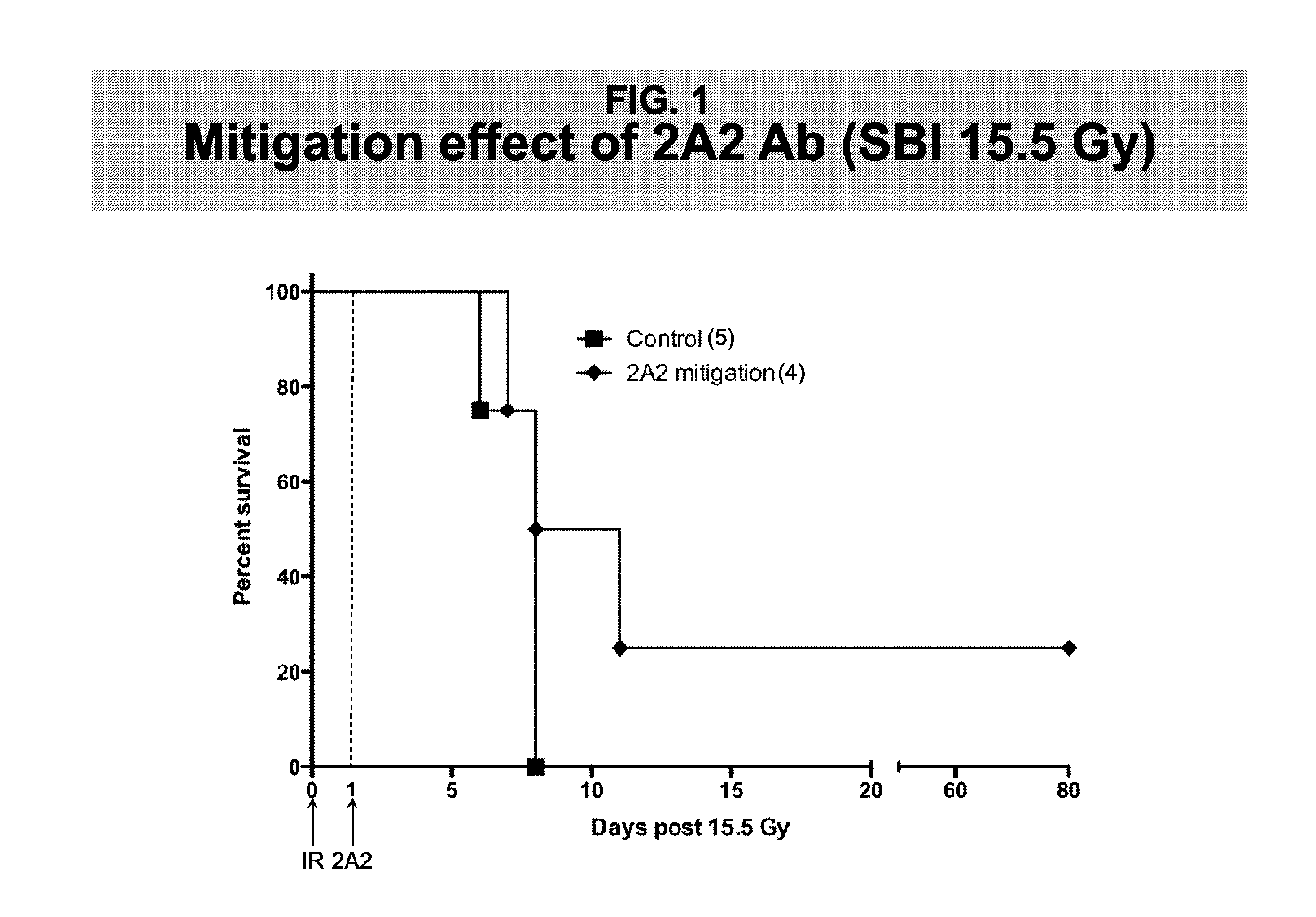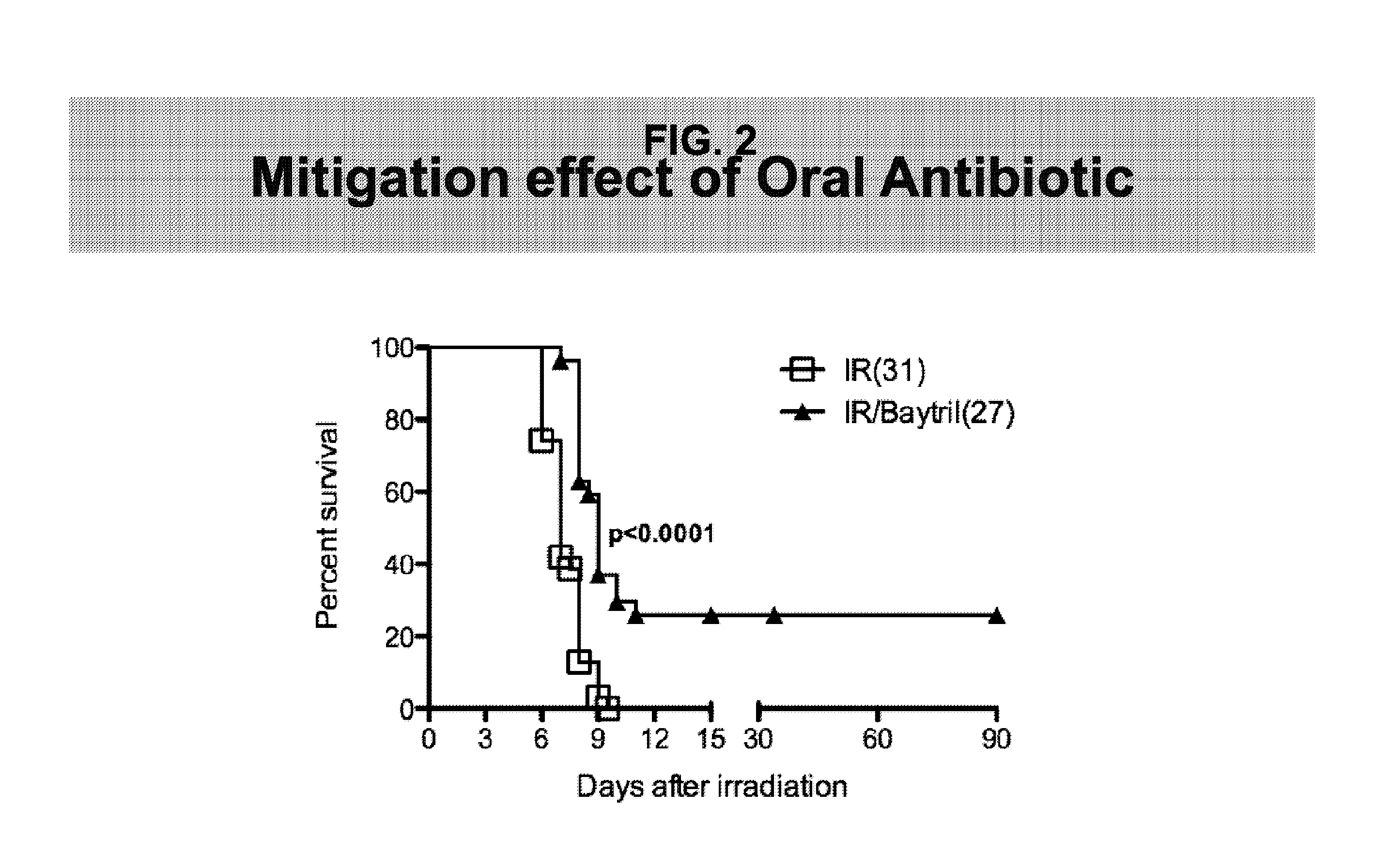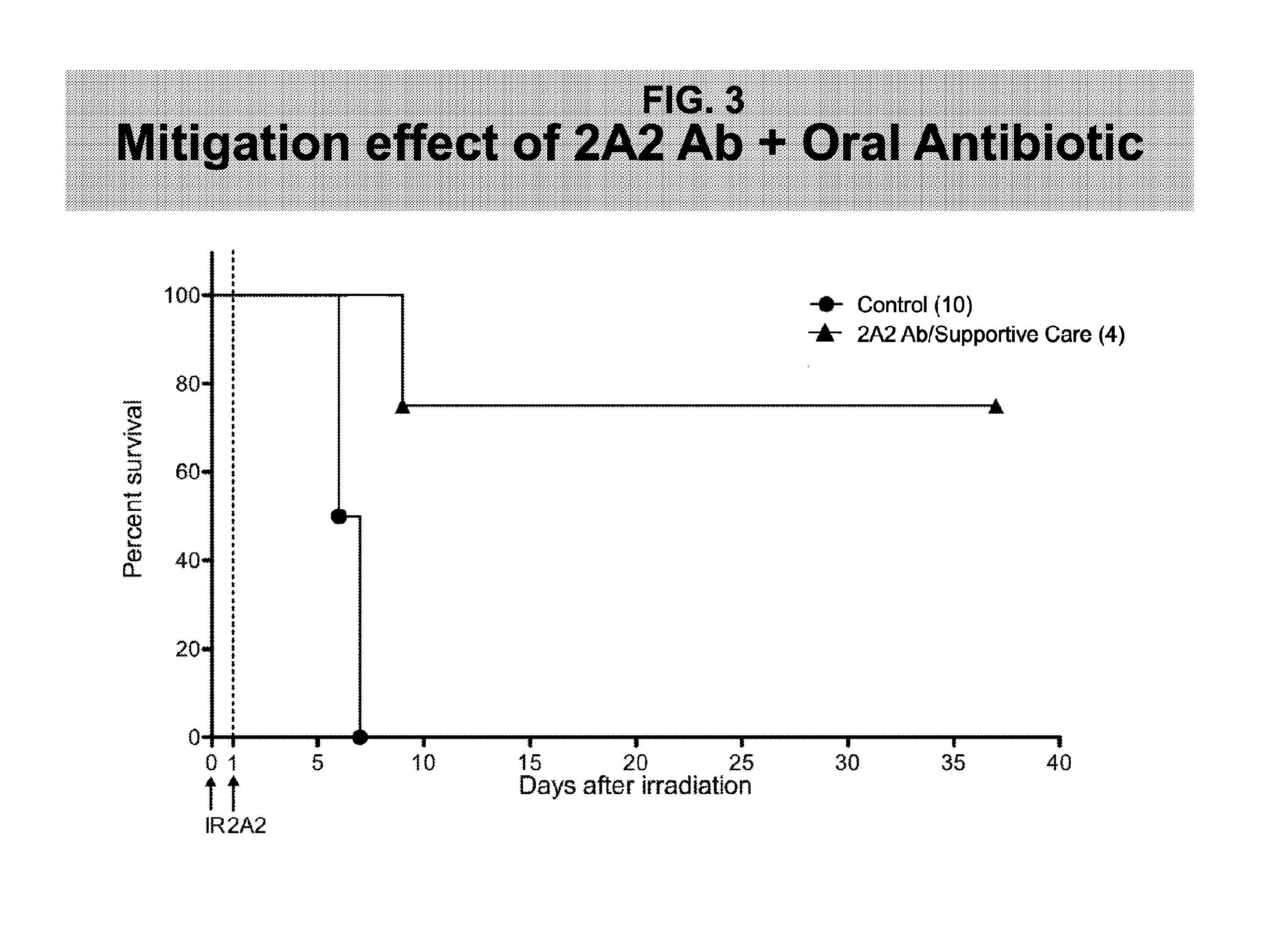Methods for Treating GI Syndrome and Graft versus Host Disease
a technology of graft and host disease, applied in the direction of anti-noxious agents, drug compositions, antibody medical ingredients, etc., can solve the problems of scarcity of efficient means of prevention, prior techniques suffer from one or more deficiencies, etc., and achieve high levels of endothelial apoptosis and scarcity of efficient means
- Summary
- Abstract
- Description
- Claims
- Application Information
AI Technical Summary
Benefits of technology
Problems solved by technology
Method used
Image
Examples
example 1
Materials & Methods
[0104]The lethality of GI stem cell clonogens is best assessed by the number of crypts surviving at 3.5 days after radiation exposure, which decreases exponentially as the dose increases (C. S. Potten and M. Loeffler, Development 110 (4), 1001 (1990), H. R. Withers, Cancer 28 (1), 75 (1971), and J. G. Maj, F. Paris, A. Haimovitz-Friedman et al., Cancer Res 63, 4338 (2003)). Crypts that contain surviving stem cells proliferate at an accelerated rate, producing typical regenerative crypts that split or bud to generate new crypts, until the intestinal mucosa regains a normal architecture. Total body irradiation (TBI) experiments in several mouse models have demonstrated that the number of surviving crypt stem cells after exposure to 8-12 Gy is usually sufficient to support a complete recovery of the mucosa. At higher doses, however, massive stem cell clonogen loss may lead to a near total collapse of the crypt-villus system, mucosal denudation and animal death from t...
example 2
[0108]Methods for making Humanized 2A2 Antibody
[0109]Methods for making monoclonal mouse 2A2 Antibody are described in PCT / US08 / 62789.
[0110]Humanization of 2A2 was performed to generate a humanized 2A2 (h2A2) monoclonal antibody by the CDR grafting method. Usually, rodent antibodies can be immunogenic to human and cause very serious side effects including the HAMA (human anti-mouse antibodies) response or anaphylactic shock. With this CDR grafting approach, CDR loops that make up the antigen-binding site of the mouse Mab are grafted into corresponding human framework regions. Initially, the variable light and heavy chain sequences of m2A2 were determined. To do so, m2A2 hybridoma cells were harvested by centrifugation and total RNA was extracted from cells. Total RNA was used for cDNA synthesis, and V-region genes of 2A2 were isolated using standard primer sets.
[0111]To identify human VL and VH homologous to those of 2A2, the variable regions of 2A2 were compared with variable regio...
PUM
| Property | Measurement | Unit |
|---|---|---|
| Density | aaaaa | aaaaa |
| Density | aaaaa | aaaaa |
| Dimensionless property | aaaaa | aaaaa |
Abstract
Description
Claims
Application Information
 Login to View More
Login to View More - R&D
- Intellectual Property
- Life Sciences
- Materials
- Tech Scout
- Unparalleled Data Quality
- Higher Quality Content
- 60% Fewer Hallucinations
Browse by: Latest US Patents, China's latest patents, Technical Efficacy Thesaurus, Application Domain, Technology Topic, Popular Technical Reports.
© 2025 PatSnap. All rights reserved.Legal|Privacy policy|Modern Slavery Act Transparency Statement|Sitemap|About US| Contact US: help@patsnap.com



